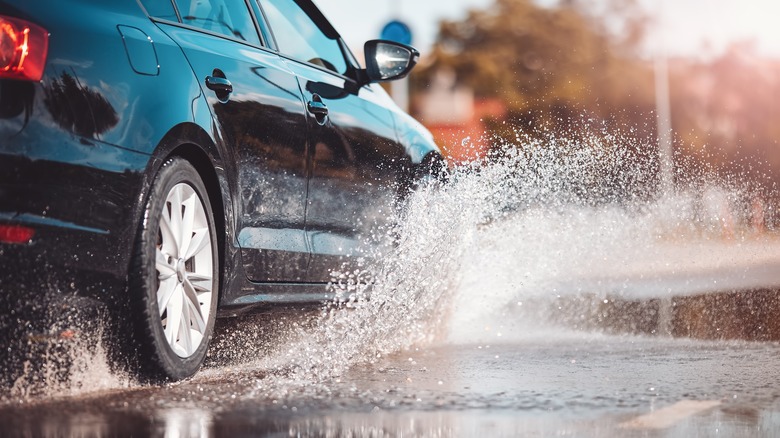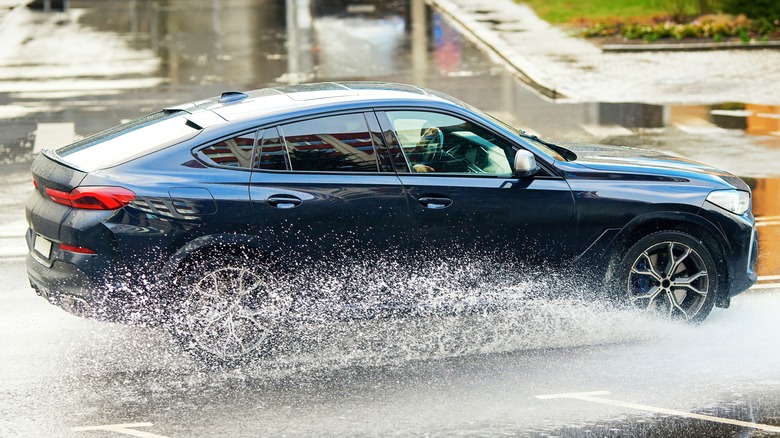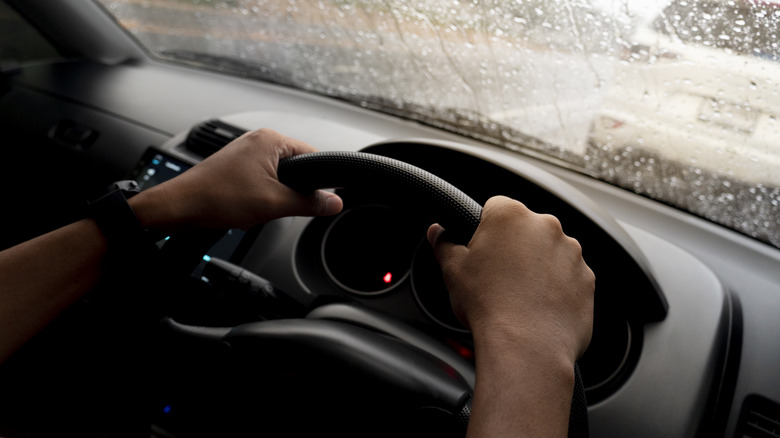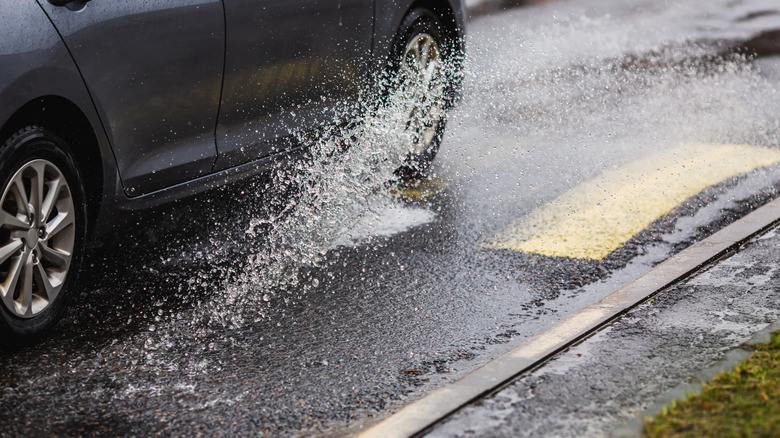What Is Hydroplaning, And What Should You Do When It Happens To You?
It's no secret that driving a vehicle is one of the most potentially dangerous activities a person can do. According to the National Highway Traffic Safety Administration, over 3,000 people lost their lives in 2022 because of distracted driving. As a responsible motorist, you need to have a massive amount of awareness while you're behind the wheel. You also need to have the ability to think on your feet and quickly execute certain moves correctly to get to your destination safely.
Even though driving can easily become an innate skill and sometimes a mundane task, there are still many unexpected things that can happen to your vehicle while you're on the road. Your car battery may suddenly conk out. You may accidentally get a flat tire. Your brakes may even fail, causing an accident. These three scenarios are some of the more common driving mishaps you may encounter as a car driver, and if you haven't yet, you should learn what to do in case any of them happen to you.
While you're at it, you should also learn about hydroplaning, which is another common occurrence while driving an automobile, especially in places that have a wet climate and experience regular rainfall.
Hydroplaning, explained
When the road is wet, especially when it's due to a heavy downpour of rain, the chances of your car hydroplaning — also known as aquaplaning — is high. The first thing that could happen when you drive over standing water on the road is that it could accumulate at the front edge of your tires. The spinning action of your wheels effectively pushes all that water under the rubber, essentially creating a wedge of liquid between the tires and the road surface. Constant wheel-spinning will cause this process to repeat and as more water gets underneath, the friction needed by the tires to grip the road surface may drastically lessen.
That loss of traction may lead to more troubles. For instance, you may lose the ability to control which direction your automobile goes. It may also cause your car tires to slide uncontrollably or take away your ability to control your speed. Many factors can cause hydroplaning to occur. A combination of the amount of rain, the condition of the road surface, and the lack of sufficient water drainage may intensify the probability of a hydroplaning event. The deeper the standing water is on the road, the higher the chance for your car to hydroplane.
Your car speed as you go over the water also plays a part. Depending on the type of tire you have and the amount of standing water you have to go through, your car can hydroplane even when you're only going as slow as 35 mph. If your car tires aren't in great shape, you have a higher potential of hydroplaning during wetter climates.
What to do when your car starts to hydroplane
If you're driving and feel yourself losing control over a vehicle due to hydroplaning, the most important thing to do is to stay calm and don't panic. Keep your hands on the steering wheel and focus on one goal in mind: slow down gradually.
To do this, take your foot off the gas pedal to reduce your tires' potential of spinning and avoid sudden movements. If your car tires are not aligned with the direction the car is sliding in, steer gently in the direction of the slide. While it may seem like the opposite of what you want to do at the moment, doing this will make it easier for you to regain traction.
The most critical thing to do is to resist the urge to use the brakes — hard braking may cause you to lose even more control over your car. Eventually, the car will get through the wet spot and slow down naturally. Once your car tires resume full contact with a drier part of the road surface, you should feel a bit more control over the vehicle.
At this point, you may slowly and gently aim your car toward a safe section of the road and gradually step on the brake pedal until you come to a complete stop, if needed. It's important to note that nearby drivers may hydroplane as well, so it's best to get out of the way if you can. If you need time to recover before continuing to drive, get off the road and pick a different area to catch a breath. In the case you accidentally hit something while your car was hydroplaning, contact your insurance company and contact emergency services for assistance.
Ways to prevent hydroplaning in the future
Going forward, you can stop your car from hydroplaning by employing certain safety measures while driving. For starters, when it's pouring out, don't drive fast. In fact, you may want to crawl at a speed between five and 10 mph. If possible, steer around standing water when you see it on the road. Otherwise, go as slow as you can while driving over it.
While driving on wet roads, avoid enabling cruise control. Stick to manual control and keep your eyes on the road and your speed. Maintain a safe distance from the car in front of you to increase your reaction time in case it's needed. If the car in front of you leaves tracks on the wet road, try to drive over them as those areas likely have less water, providing you with better road traction.
It's also important to ensure that your tires are always in optimal condition. Check the tread depth of your car tires on a monthly basis and consider replacing ones that have worn down to 2/32 of an inch. Make sure that they're properly inflated by following the pressure level recommendation set by your car manufacturer. When you can, get your tires rotated so that they wear out in a balanced way. If you live in an area where it rains quite often, consider getting specialty tires that grip better in wetter conditions.
As long as you keep up with your car's maintenance schedule and drive with an abundance of caution when you can't postpone driving in rainy weather, you may be able to significantly diminish your likelihood of hydroplaning, if not avoid it from happening altogether.



